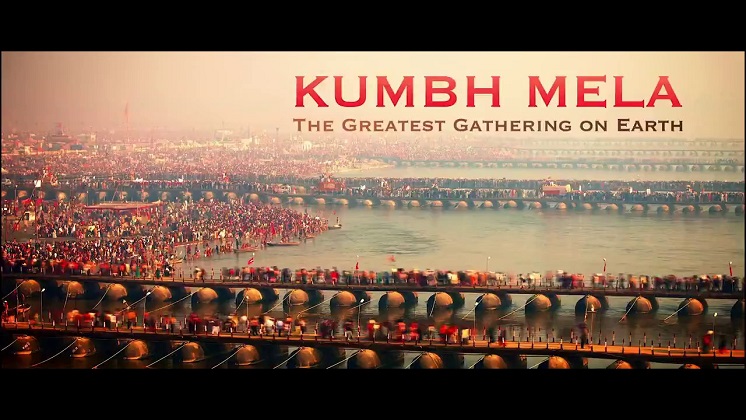

More than 12 crore pilgrims are supposed to visit the holy city of Prayag Raj(Allahabad) in the next few weeks. They are visiting the age-old city seeking nothing empirical or material but something spiritual. The city of Prayag Raj is something holy to an ordinary Hindu. Because it is here where the three holy rivers – the Ganga, the Yamuna, and the invisible Saraswathi -converge. But from this January 15 to March, the devotees and saints all are coming to this city to participate in the ‘Ardh Kumbha Mela’. The Kumbha Mela is the largest spiritual festival in the world.

The City of Prayag Raj
It wouldn’t be wrong to say that it is the city of God as the name itself, Allahabad, in Persian means Settled by God. It for this reason, which has been innumerably mentioned in the ancient Hindu texts, and the history of the place, both mythological and factual that makes it one of the most fascinating and one among the main holy cities in India, special to the hearts of Hindus in India and abroad.
It’s the mythological history according to which, when Lord Brahma was done with creating the world, offered his first sacrifice here. Hence the justification of its ancient name Prayag, meaning Place of Sacrifice. The place also holds a special significance according to the Hindu scriptures for holding the confluence of three of the most sacred rivers of India: Ganga, Yamuna, and Saraswati at Triveni Sangam, which becomes the nucleus of all celebrations of Kumbh Mela.

The Mythology behind Kumbha Mela
Kumbh Mela derives its name from the immortal Pot of Nectar, which the Demigods (Devtas) and Demons (Asuras) fought over, described in ancient Vedic scriptures known as the Puranas. It is this Vedic literature that has stood the test of time, out of which the tradition has evolved into the one that the world now knows as The Kumbh Mela.
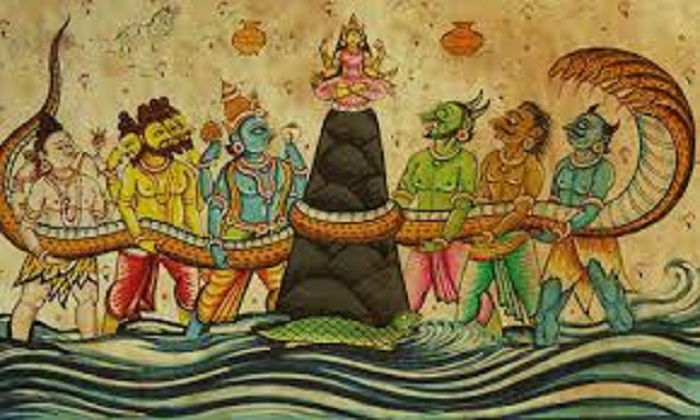
Legend tells a tale from the bygone days of the universe when the demigods and the demons conjointly produced the nectar of immortality. The demigods, because cursed, were crippled of fear that eventually made them weak. The task being too sturdy for them alone, the demigods made a mutual agreement with the demons to complete it in full and share the nectar of immortality in half. It is said that the demigods and the demons assembled on the shore of the milk ocean that lies in the celestial region of the cosmos. And it began!
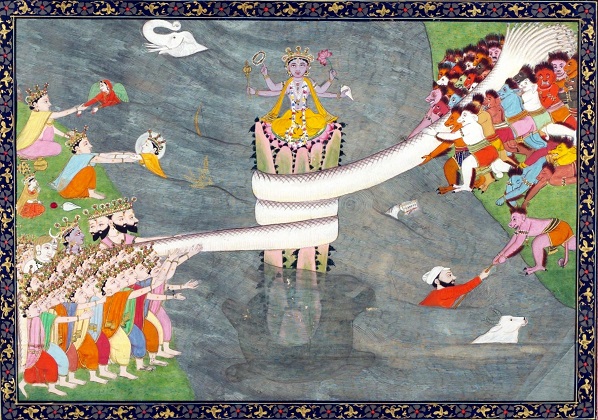
For the task of churning the milk ocean, the Mandara Mountain was used as the churning rod, and Vasuki, the king of serpents, became the rope for churning. With the demigods at Vasuki’s tail and the demons at his head, the churning began. At first, the churning of the milk ocean produced a deadly poison which Lord Shiva drank without being affected. As Lord Shiva drank the poison, a few drops fell from his hands which were licked by scorpions, snakes, and similar other deadly creatures.

Also, during the churning, the Mandara Mountain began to sink deep into the ocean, seeing which Lord Vishnu incarnated as a great tortoise and supported the mountain on His back. Finally, many hurdles and 1000 years later, Dhanwantari appeared with the Kumbh of immortal nectar in his hands. The demigods, being fearful of the demons’ ill intent, forcibly seized the pot with its safety entrusted onto the four Gods – Brahaspati, Surya, Shani, and Chandra.
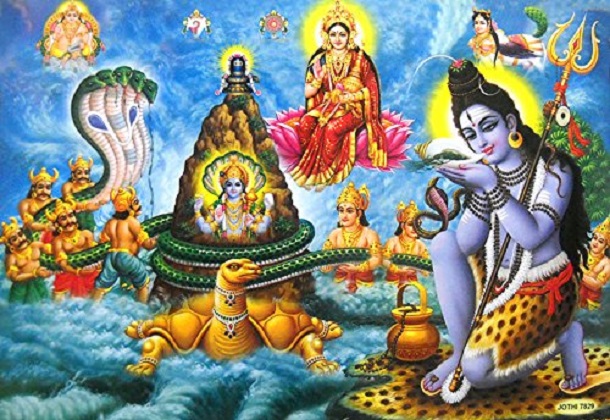
Demons, after learning that their part of the agreement has not been kept, went after the demigods and for 12 days and 12 nights, the chase continued. Wherever the demigods went with the pot of nectar, fierce fighting ensued. It is believed that during this chase, a few drops from the Kumbh fell at four places – Allahabad, Haridwar, Ujjain, and Nasik. There is also a prevalent legend that it was actually the demons that were being chased by the demigods for 12 days and 12 nights, during which the drops of elixir of immortality fell at these four places.

These four places are since believed to have acquired mystical powers. Because 12 days of Gods are equivalent to 12 years for humans; the Kumbh Mela is celebrated once every 12 years in each of the four places – banks of river Godavari in Nasik, river Kshipra in Ujjain, river Ganges in Haridwar, and at the Sangam of Ganges, Yamuna, and Saraswati in Allahabad, where the drops are believed to have fallen. Millions of devout, come together to partake in ritualistic bathing and ceremonies to cleanse themselves of all sins.
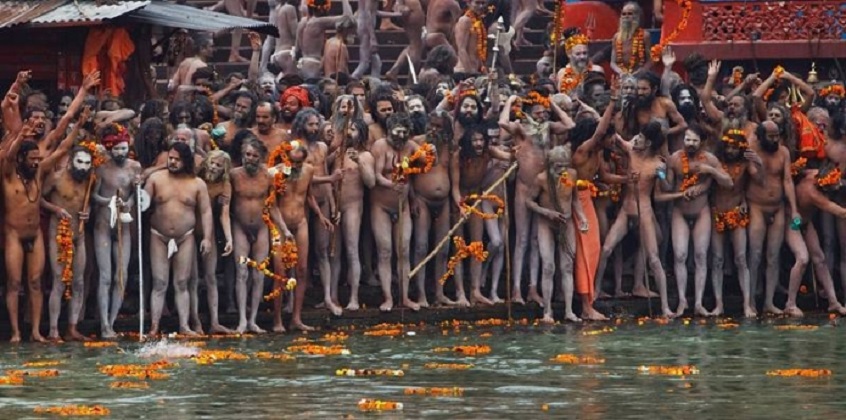
While ritual bathing in the rivers of the site where the Kumbh Mela is held is the most noticeable event of the festival, the Peshwai Procession, a procession of Hindu monks and ascetics, is also a large crowd puller. The two months of the Kumbh Mela also encompass several religious discussions, preaching sessions where Hindu doctrines are taught by the religious gurus to the common man, religious musical events, and charity work. Mass feeding of the poor and the needy, holy men and women, sponsored by wealthy Hindus visiting the event, is also a common practice at the Kumbh Mela.
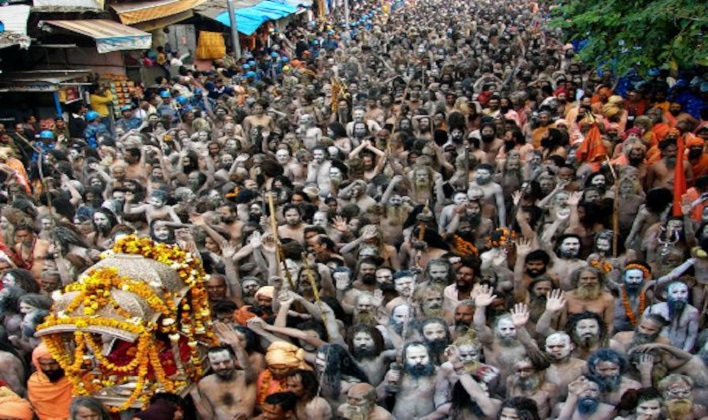



Post Your Comments